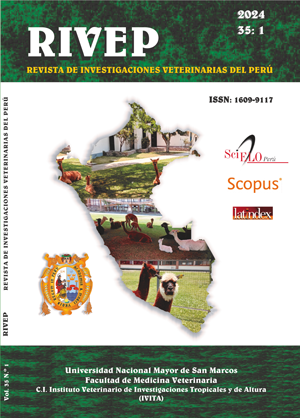Possible phylogenetic relationships based on the morphology of the ovine calcaneal bone (Ovis aries Linnaeus, 1758)
DOI:
https://doi.org/10.15381/rivep.v35i1.25484Keywords:
post-cranial anatomy, basipodium, tarsus, zooarchaeologyAbstract
In sheep, there is a relationship between the mass of the crural muscles and the greater or lesser ability to walk, in turn perhaps related to body proportions, so there could be functional differences between breeds, based on different motor skills. The calcaneal bone represents the base of insertion of the crural muscles responsible in part for walking. To corroborate this hypothesis, digital images of 28 calcanei of domestic sheep of four breeds from the Iberian Peninsula were obtained: Churra, Merina, Merino preto and Merino branca. The images were analysed using geometric morphometry techniques from 20 anatomical landmarks (bone points). Significant differences were obtained between breeds, both for shape and size, being greater in merinos. It can be deduced that the conformation of the calcaneus reflects the variable enthesis area according to the greater or lesser development of the crural muscles. It is considered that these differences between races are mainly defined as a matter of body conformation rather than dynamogenic capacity.
Downloads
Downloads
Published
Issue
Section
License
Copyright (c) 2024 Pere M. Parés-Casanova, Lluis Llovera, Carmen Rissech, Simon Davis

This work is licensed under a Creative Commons Attribution 4.0 International License.
AUTHORS RETAIN THEIR RIGHTS:
a. Authors retain their trade mark rights and patent, and also on any process or procedure described in the article.
b. Authors retain their right to share, copy, distribute, perform and publicly communicate their article (eg, to place their article in an institutional repository or publish it in a book), with an acknowledgment of its initial publication in the Revista de Investigaciones Veterinarias del Perú (RIVEP).
c. Authors retain theirs right to make a subsequent publication of their work, to use the article or any part thereof (eg a compilation of his papers, lecture notes, thesis, or a book), always indicating the source of publication (the originator of the work, journal, volume, number and date).










